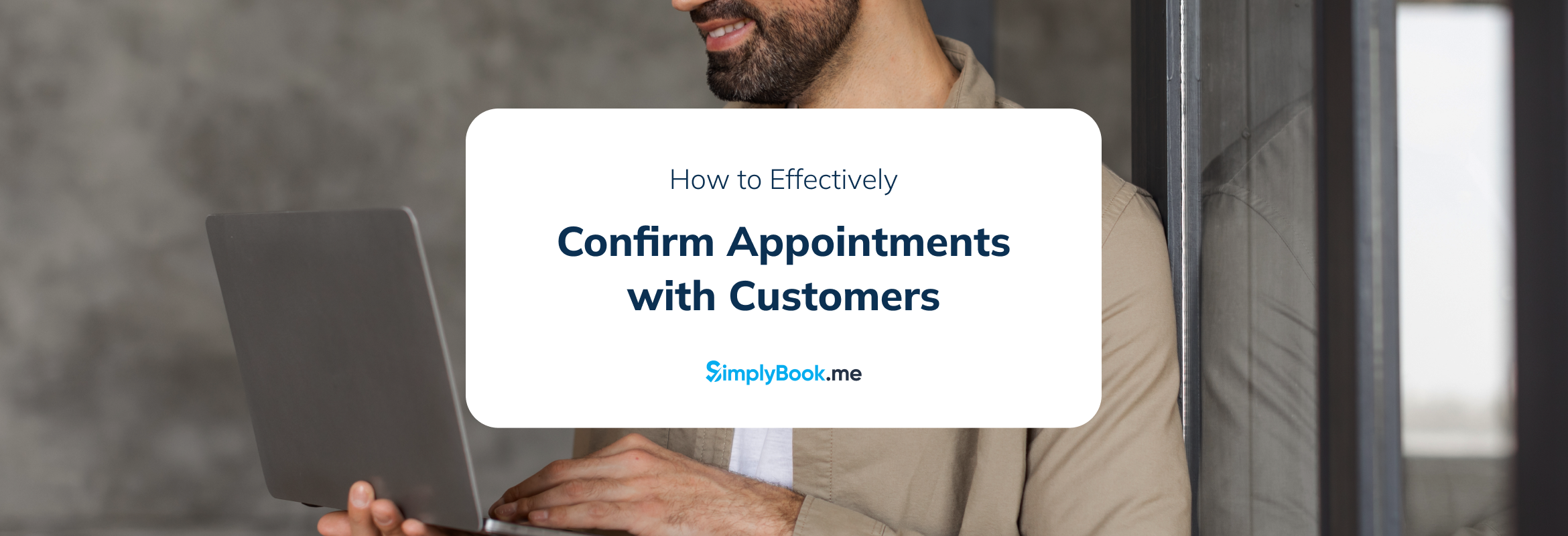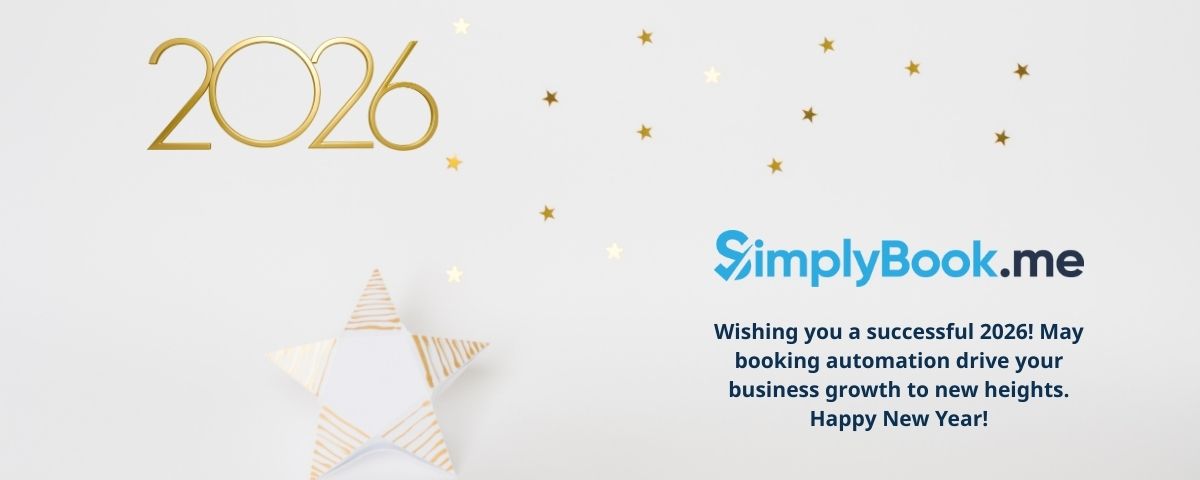How to Effectively Confirm Appointments with Your Customers

This post is also available in:
![]()
![]()
![]()
![]()
Do you want to learn how to easily and effectively confirm appointments with your customers? If so, you are in the right place!
Confirming an appointment may seem like a small detail, but it actually has a big impact on both customer experience and operational efficiency.
A well-made reminder sets the tone for your interaction, builds excitement, and shows new customers that you’re a trusted professional. They also reduce no-shows and result in more positive experiences, which is something businesses across all industries want to achieve.
Today, I’ll show you 7 actionable ways to create appointment confirmations that will help take your business to the next level.
Let’s dive in!
Include Relevant Details
First, we have to discuss including all the important details in your appointment confirmation message. You could send the best-looking email reminder in the world, and it won’t matter if it’s missing the key details your audience needs to know.
With that in mind, make sure to include the date, time, and location of the appointment, as well as the service type and duration. If there’s anything special you need the client to do or prepare before showing up, make sure to highlight it so there’s no confusion.
Organize this information logically, perhaps using bullet points or a simple table so it’s easy to scan. Start with the most important information (date, time, location) and then add the extras. You may also want to consider using a bold font or a different color for the most important parts so they stand out.
Don’t forget that while you want to be thorough, too much information can be overwhelming. Keep your message short and sweet and focus on what the customer needs to know to be prepared and on time for their appointment.
Here’s a great example:
Image Source: Really Good Emails
Personalize Your Messages
Now, let’s discuss why you should always personalize your messages. I’ve found that personalized confirmation reminders drastically improved our response rate, and as a result, more people kept their appointments.
But how do you personalize your appointment confirmations?
My advice is to start with the basics. Using your customer’s name in the subject line and message is a simple yet powerful way to get attention and create a connection.” “Hello, John” is so much more engaging than “Dear Customer.”
Next, try to tailor your message to the specific service booked. For example, instead of “Your appointment is confirmed,” try something like “We’re looking forward to seeing you for the product demonstration on Friday.” This confirms the appointment and reminds the customer of the service they’re expecting.
If possible, you should also mention the name of the person who will be helping. Explaining that “Claire is looking forward to helping you with your financial planning session” adds a human touch and builds a connection before the appointment even begins.
There are plenty of other ways to personalize your messages based on your industry, your services, and your target audience. Experiment for yourself and you’ll see that personalization can make a huge difference in confirmations.
Send Multiple Reminders
A good reminder strategy can help you avoid last-minute cancellations and create a better experience for your audience. For the best results, I suggest sending at least 2 appointment confirmations. Start with an initial confirmation as soon as the user books an appointment. This step is crucial because it shows customers that their appointment has been booked. If they don’t see this, they might forget they booked it entirely.
Next, send a reminder closer to the appointment date, perhaps 24-48 hours in advance. This gives the customer time to make any necessary arrangements or reschedule if necessary. For high-ticket sales appointments, you may want to send an extra confirmation on the day of the event.
The key is to find the right frequency without being too much. Too many reminders can be annoying, and too few, and the customer might forget the appointment. When deciding on your reminder schedule, consider your industry and the typical lead time for appointments. You can also ask users to choose their preferences, which is what Duolingo does when they don’t get a response.
Image Source: Really Good Emails
Offer Easy Reschedule Options
Flexibility is undoubtedly key to customer happiness. Offering easy options for rescheduling can help you save people who are thinking about canceling because they can’t make the appointment. People like having the option to reschedule (within reason) because it shows that you value their time and understand plans can change.
My advice is to include reschedule instructions or, better yet, a direct link to your calendar so they can reschedule at a time that’s convenient for everyone.
When establishing a rescheduling policy, balance customer needs with your business needs. Consider free rescheduling up to 24 or 48 hours before the appointment and a small fee for last-minute changes.
Communicate these policies in your confirmations so customers know what to expect, and you can bet that people will use this feature if there’s a scheduling conflict.
Share Your Contact Info
Including your contact information in confirmations opens up a two-way street that’s crucial for making sure everyone’s on the same page. The last thing you want is for attendees to walk away from your message with questions or concerns that they can’t get answered.
Luckily, you can seriously reduce the chances of this happening by including your business phone number, email, and even a direct line to the department or service provider, if applicable.
Actively encourage customers to contact your support team if they have questions or need to make changes. For example, you could say, “If you need more information or have questions about your appointment, please let us know.”
You’ll also want to set expectations for your average response time. Letting customers know how long it will take for a response can make them a little more patient than they otherwise might be.
It’s also worth mentioning that making yourself accessible and setting clear communication guidelines will help you build trust with your customers and create a more positive, interactive booking experience.
Image Source: GoMarketBox
Make Sure Your Message is Accessible
Another important factor for your confirmation messages is their accessibility, both in terms of wording and from a technical standpoint.
Structure your message with simple language, short paragraphs, and bullet points, and people will have an easier time following what you have to say.
When it comes to technical accessibility, I’m specifically talking about how your message looks on different devices. Over 92% of smartphone users say they regularly use the internet on their devices, so it’s easy to see why this aspect of your reminder is important. If people can’t read your confirmation message, whether it’s an email or a push notification, they’re more likely not to show up for the event.
I suggest using a mobile-responsive theme/template, a clear, readable font with good contrast, and adding alt-text for images. By making your messages accessible to everyone, you reduce misunderstandings and no-shows while providing an inclusive experience for all customers.
Save Time with Automation
Finally, let’s talk about the benefits of automating appointment reminders with your customers. By implementing automated confirmations, you can save countless hours each month while ensuring consistent, timely communication with your customers.
Most modern scheduling software offers robust automation features. You can set up automatic confirmations to be sent immediately after booking and schedule reminders at specific intervals before the appointment. This feature ensures that every customer receives the right information at the right time, without any manual effort on your part.
The best part is despite being automated; these messages can still maintain a personal touch. Many systems allow for extensive customization, including personalized fields like the customer’s name, appointment type, and provider name.
By leveraging automation, you free up time to focus on providing great service during actual appointments while still maintaining excellent communication throughout the booking process. This streamlined approach enhances overall satisfaction and efficiency, benefiting both you and your customers.
Conclusion
As you can see, there’s a lot of thought that goes into crafting and planning a perfect appointment confirmation. The tips I’ve outlined here have helped us build rapport, reduce no-shows, and generate more sales and engagement. I believe you can achieve similar results if you’re willing to take the next step and find thoughtful ways to make these tips a regular part of your strategy.
Author Bio
Syed Balkhi is the founder of WPBeginner, the largest free WordPress resource site.
With over 10 years of experience, he’s the leading WordPress expert in the industry. You can learn more about Syed and his portfolio of companies by following him on his social media networks.



Comments
0 commentsNo comments yet